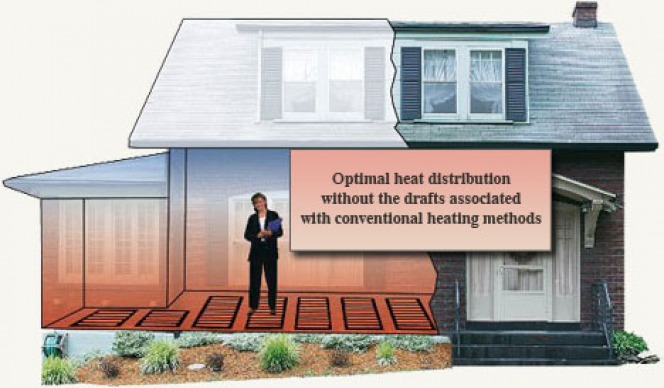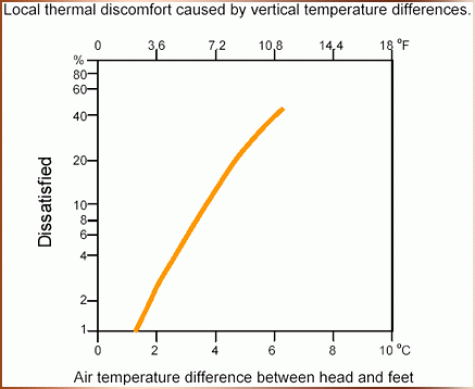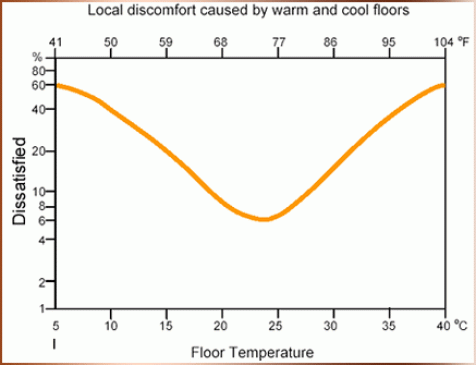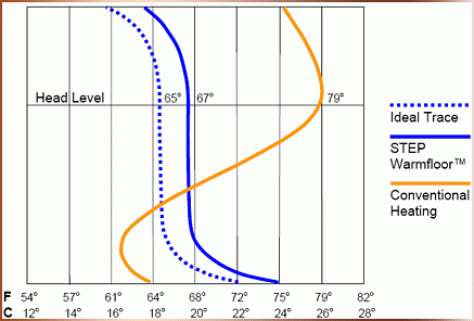A Guide to Radiant Heat
Heat does not rise. Heat goes to cold. Hot air rises, which is why Step Warmfloor™ feels so comfortable. With Step Warmfloor™, heat is kept where it is needed – at the floor. This type of heat is called radiant heat, which is the process in which energy is emitted, as particles or waves, by one body and transmitted through an intervening medium or space, then absorbed by another body.
To help you understand our method of heating, please review the following guidelines and benefits to using STEP Warmfloor™ radiant heat.
What is Radiant Heat?
Radiant heat enhances comfort because radiant systems warm the floor and the objects in the room. This prevents your body from losing heat to cold objects in the room. This is due to the scientific fact that heat energy is always drawn to cold objects. When we stand on a cold floor or next to a cold wall, we feel cold. This has nothing to do with the air temperature and everything to do with the fact that heat is being lost from our bodies to warm up the cold objects around us. This heat loss is controlled with radiant heating.
What temperature does it take for us to feel comfortable?
Do you know that if your feet are at warm and your head is at cool, you will feel perfectly comfortable?
If you look at forced air heat, we are heating our living space from the ceiling down to the floor because warm air rises. This means to get our feet moderately comfortable, the temperature at the ceiling may wind up very high. It takes a significant amount of energy to create and maintain that comfortable temperature at our feet in a forced air system.
With radiant heat, we switch that temperature profile around. The entire floor becomes the radiator. The temperature at the floor level is at that comfortable range while the temperature at our head is lower but still at a very comfortable temperature. The heat radiates up from the floor, warming all the objects in the room. Everything in the room will gain a nice, warm, comfortable feel to it. Even your bare feet propped up on the table will be comfortable from the warmed coffee table surface. The amount of energy required to create and maintain this comfortable temperature at our feet is significantly less than compared to forced air.
What are the determining conditions for acceptable thermal comfort?
As documented by ANSI/ASHRAE Standard 55-1992-R, local thermal comfort is determined by the vertical air temperature difference between the feet and the head, by an asymmetric radiant field, and by a local convection cooling (draft), or by contact with a hot or cold floor.
Thermal stratification resulting in the air temperature at the head level being warmer than at the ankle level may cause thermal discomfort. Thermal stratification in the opposite direction is perceived more favorably by occupants.
Occupants may feel uncomfortable due to contact with floor surfaces that are too warm or too cool. The temperature of the floor, rather than the floor covering, is the most important factor for foot thermal comfort. Optimal floor temperature is 75°F (24°C).
What makes STEP Warmfloor™ so comfortable?
With Step Warmfloor™, heat is kept where it is needed – at the floor. This keeps you more comfortable (even at a lower temperature setting) because when your feet are warm, you feel warmer. Also Step Warmfloor™ reduces thermal discomforts due to drafts. The heat distribution in a room is optimal when the temperature is higher at the feet than at the head level.
What are the benefits of STEP Warmfloor™?
- Step Warmfloor™ is the most energy efficient heating available because the material itself is self-regulating and only draws the energy it needs to maintain an even temperature on the whole surface. The heating elements cannot overheat.
- Step Warmfloor™ is a low-voltage system and can be regulated to the ideal chosen temperature level making it more efficient than an on/off system.
- Studies from the "Sick Building Syndrome" show a direct relation between indoor climate and symptoms such as fatigue and headaches. Research shows that thermic indoor climate is also related to productivity. The level of comfort with radiant heat at lower temperatures increases productivity by 20-30%.
- Indoor Air Quality is directly correlated with respiratory illness. The last thing you want your mechanical system to do is to distribute dust, mold spores, pollen, and other particulates throughout the structure. Because radiant heat does not blow allergens, it helps those with allergies and asthma find dramatic improvement to their symptoms.
- Radiant floor heat minimizes mold growth because it reduces the type of humidity that fosters mold and fungi growth.
- Step Warmfloor™ can be used as the primary heat source of a building or can be installed in areas where extra heating or floor warming is required.
- Step Warmfloor™ can be installed in a new construction and is ideal for home remodeling due to the thinness (1,2 mm ; 3/64”) of the material.
- Step Warmfloor™ is easy to install and can go over/under any floor coverings.
- Radiant heat is the best way to comfortably heat a concrete slab. Basements can become warm, usable spaces with radiant floor heating.
- Not only will Step Warmfloor™ heat keep you more comfortable than any other heating system, but also it will reduce your energy costs (by 30 to 60%) and increase the value of your home.
Please email us with any questions:
[email protected]
[email protected]






